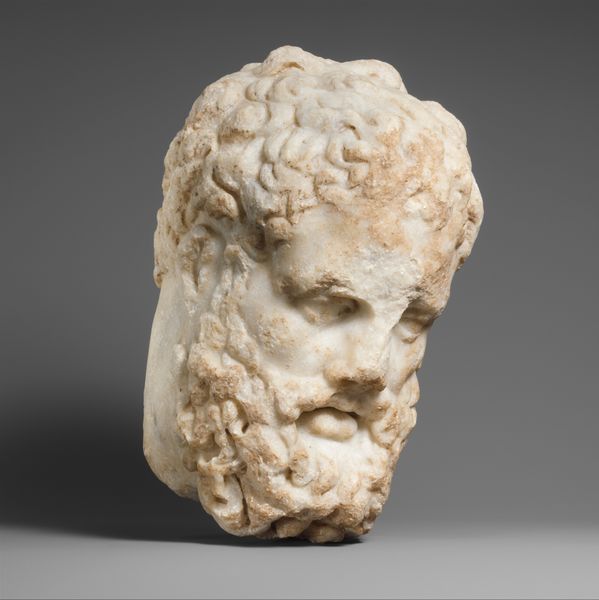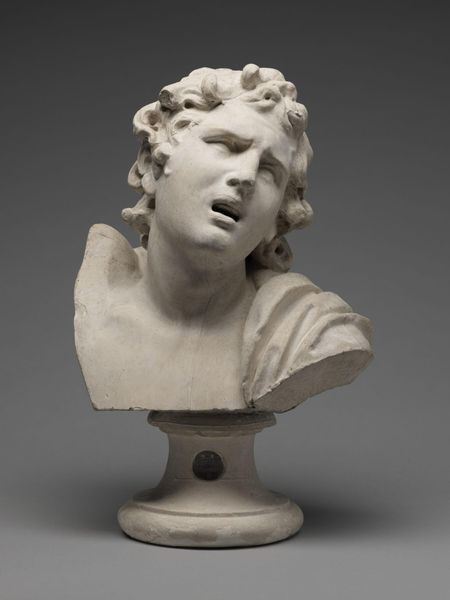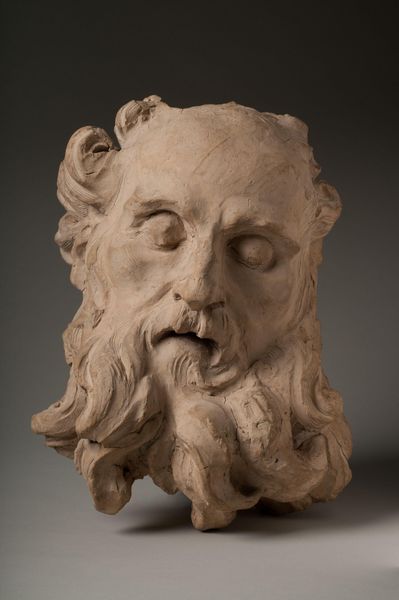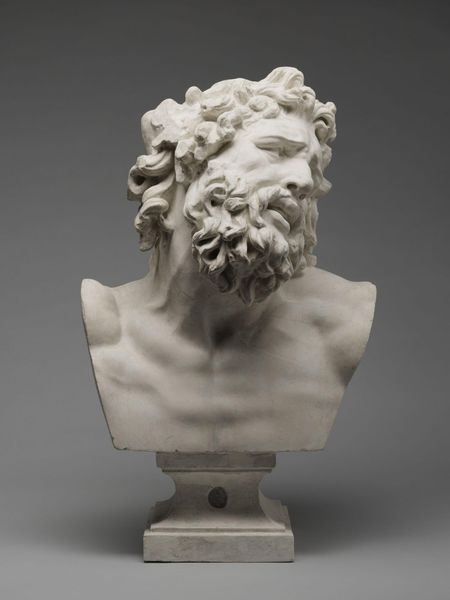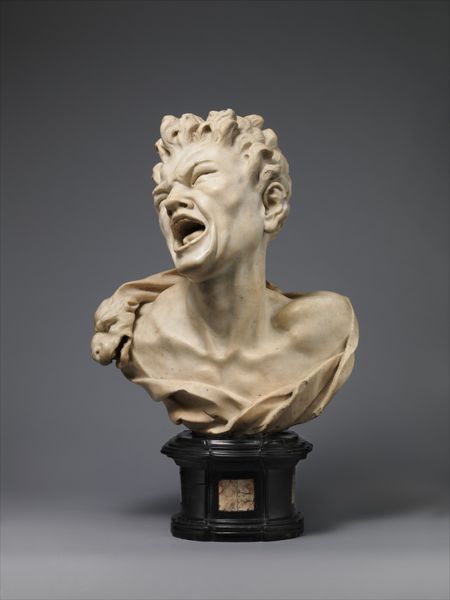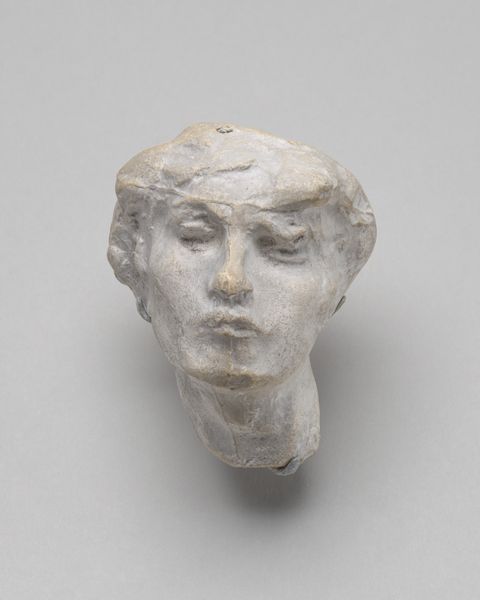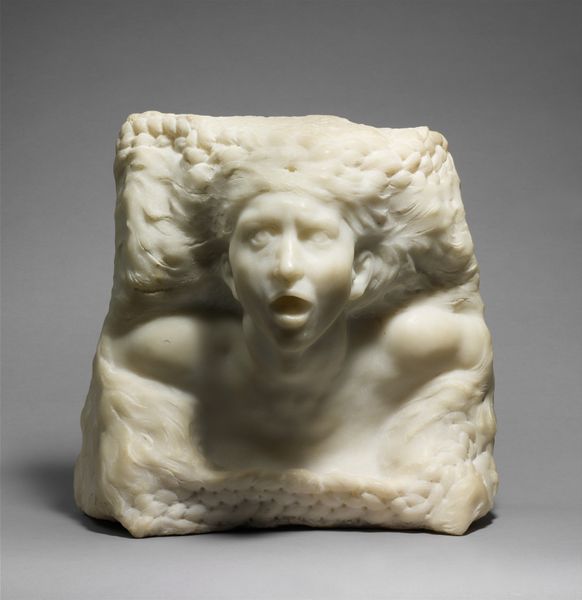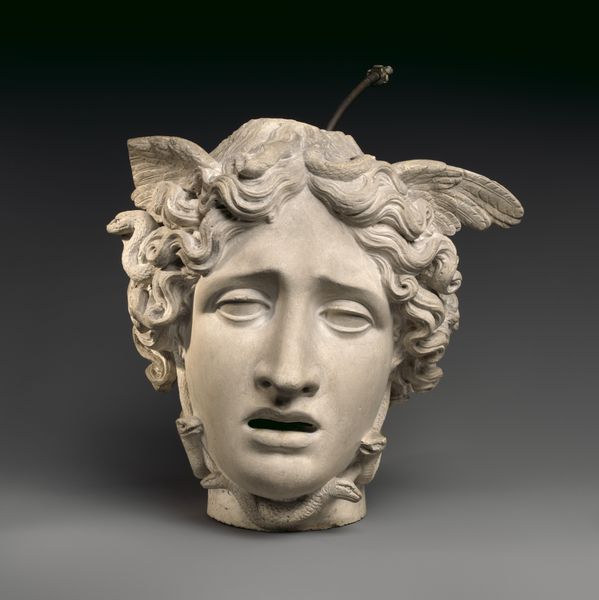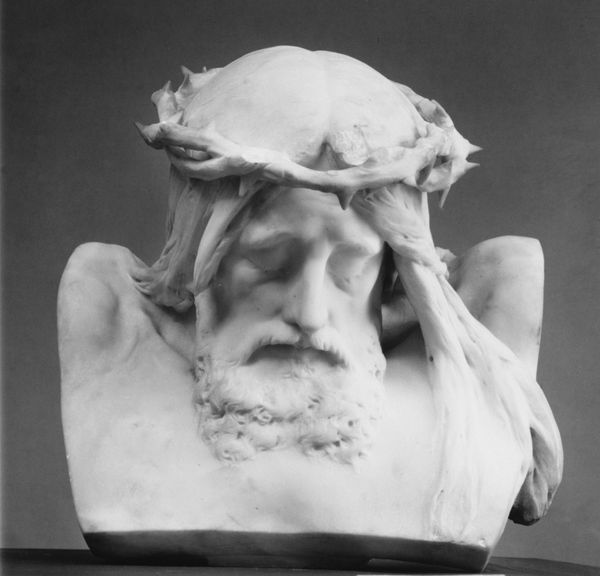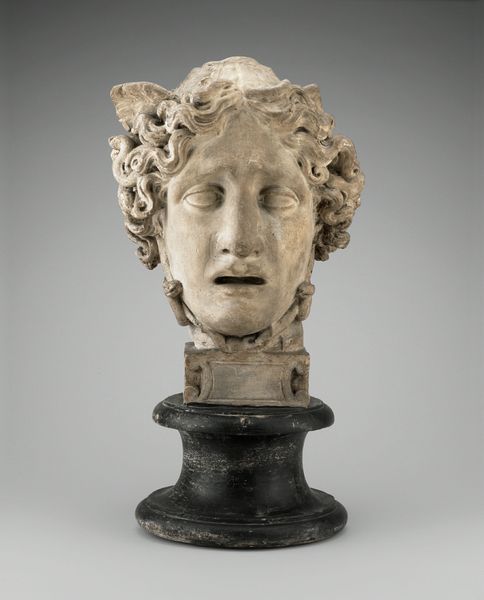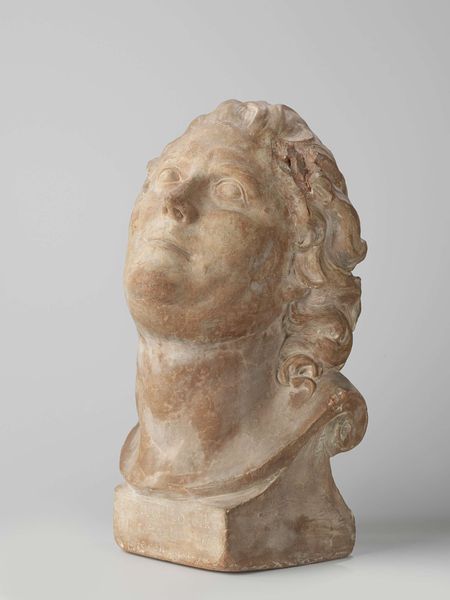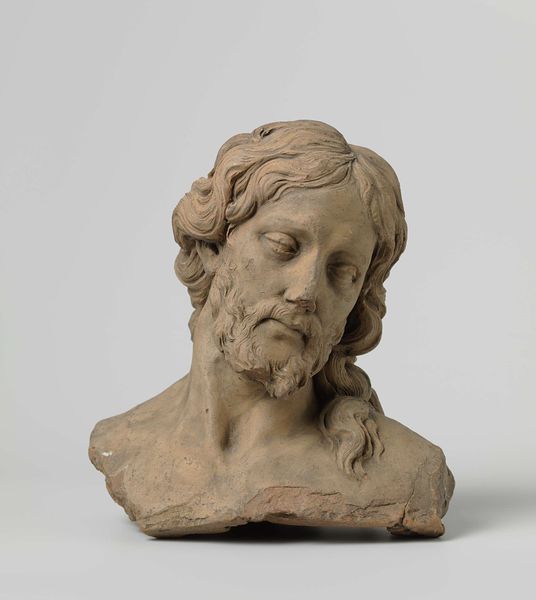
sculpture, marble
#
portrait
#
sculpture
#
sculpture
#
academic-art
#
marble
#
realism
Dimensions: overall (greatest extension): 6.7 cm (2 5/8 in.)
Copyright: National Gallery of Art: CC0 1.0
Curator: Here we have Auguste Rodin’s marble sculpture "Head of Saint John the Baptist," created in 1887. The piece offers a powerful glimpse into Rodin's unique style. What is your initial read of it? Editor: The immediate feeling is one of profound melancholy, wouldn’t you say? His closed eyes suggest inward contemplation, but the open mouth, slightly agape, hints at suppressed agony or a silent scream. The unfinished edges around the face, that rough, almost violent texture, intensifies the raw emotion, don't you think? Curator: Absolutely. I find the symbolic weight heavy indeed, John the Baptist as the archetypal herald silenced too soon, his message curtailed. The slightly upward tilt of the head has been interpreted as anticipation or perhaps even a vision, but as an artist, I wonder if he was attempting to create a specific vision? Perhaps just feeling. Editor: Or is it the very moment of his martyrdom captured? The head severed, raised up in reverence but also a ghastly image of sacrifice? Marble, so often used for idealized forms, here feels brutally honest. And look how Rodin allows the unworked stone to remain, as if to underscore the incompleteness, the brutal ending. It becomes symbolic of the unfinished nature of his message and destiny. Curator: Yes, but at the same time there is grace here, I find. His beard is more symbol than actual beard! Perhaps the simplification emphasizes John's unwavering devotion even in death. It seems Rodin found him an endless fascination, as the Head can be considered related to a complete standing John, and later used as an expressive piece as you see him here. Editor: Interesting! The choice of depicting John specifically seems very deliberate, knowing Rodin's fascination with suffering. The open mouth as a symbol isn’t passive—it actively cries out against injustice. It places John as a perpetual figure of rebellion, eternally resonating in the cultural imagination. Even severed, that voice, however muted, continues to speak through this powerful symbol. Curator: I'm glad to find new interpretations! Rodin leaves room for us all to grapple with this haunting figure. Editor: Indeed! And allows this "head" to carry so much symbolism. Thank you for walking us through!
Comments
No comments
Be the first to comment and join the conversation on the ultimate creative platform.
